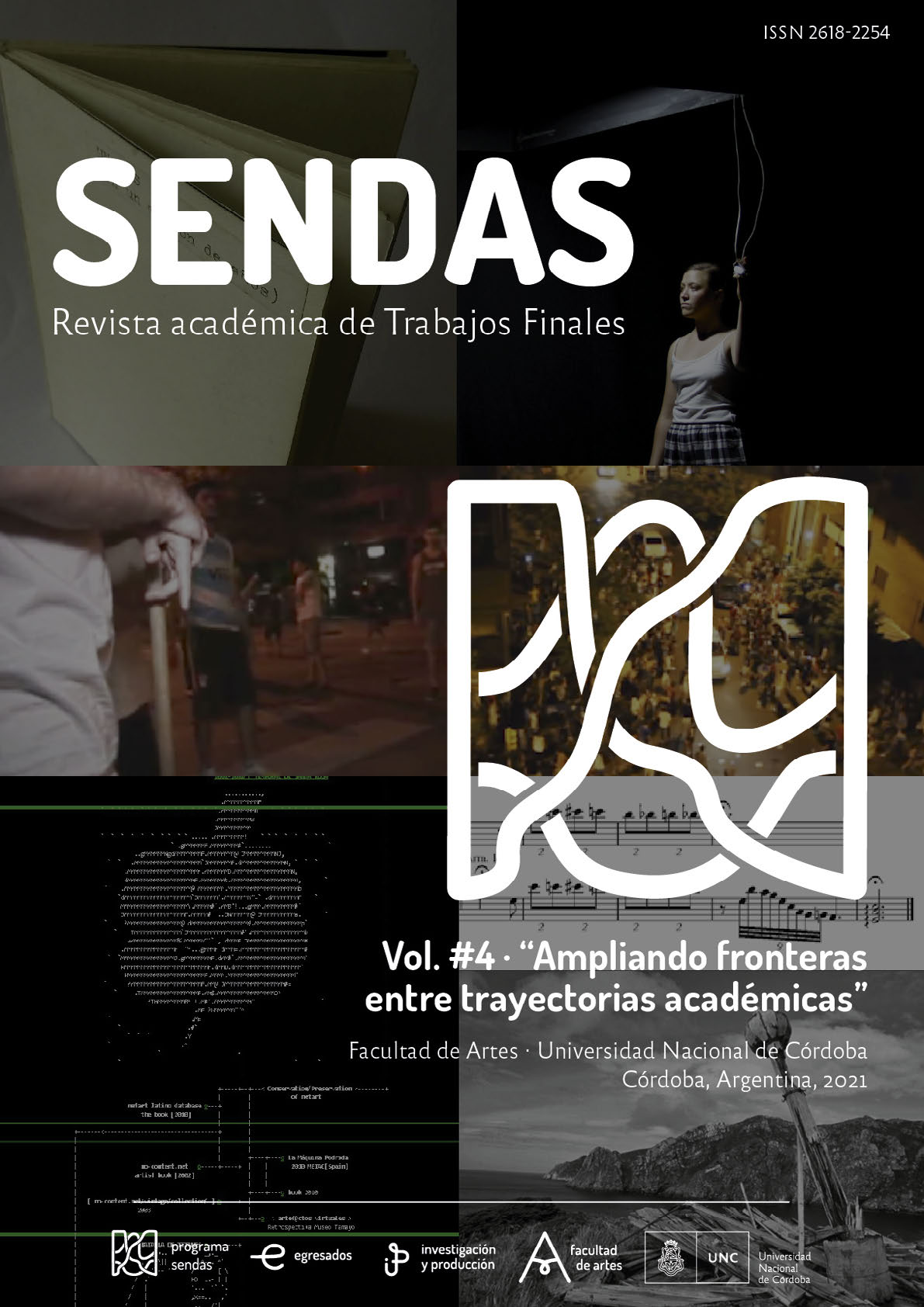The Reason for Tango. A Functional Proposal for Composition Drawn from the Perceptual-cognitive Mechanisms Generated by the Musical Gesture.
Keywords:
Contemporary Music, Perception, ComposersAbstract
Usually, audiences consisting of people without musical training respond to the music created in “current” aesthetics with attitudes ranging from surprise to rejection. This is led by the simple fact that they do not understand its diverse logic. There are functionalities that a composer can use at the time of the development of their discourse which can facilitate the audiences’ process of assimilation of this “new music”. It is probable that cognitive mechanisms will not only be a starting point to establish common principles to guide the musical experience, but that they will also effectively link composers with their future audiences.
Downloads
References
Balderrabano, S., Gallo, A., & Mesa, P. (2010). El gesto musical. Actas del II Congreso Iberoamericano de Investigación Artística y Proyectual y V Jornada de Investigación en Disciplinas Artísticas y Proyectuales. La Plata.
Balderrabano, S., Mesa, P. (2006). Los elementos constitutivos del tango de la Guardia Vieja en relación a los aportes realizados por músicos de formación académica. Actas del II Congreso Iberoamericano de Investigación Artística y Proyectual y V Jornada de Investigación en Disciplinas Artísticas y Proyectuales. La Plata.
Delval, J. (2002). El desarrollo humano. Argentina: Siglo XXI editores.
Gadner, H. (1997). Arte, Mente y Cerebro. Una aproximación cognitiva a la creatividad. Barcelona: Editorial Paidós.
Kohan, P. (2010). Estudio de los estilos compositivos (1920 – 1935). Argentina: Gourmet Musical Ediciones.
Piaget, J. ([1966] 1984). La psicología del niño. Madrid: Editorial Morata.
Salgán, H. (2001). Curso de Tango. Buenos Aires: Pablo Polidoro Diseño Editorial.
Vigotsky, L. S. (2003) La imaginación y creación en la edad infantil. La HEditorial Pueblo y Educación.
Downloads
Published
Issue
Section
License
Copyright (c) 2021 Edgard Guillermo Moya Godoy

This work is licensed under a Creative Commons Attribution-NonCommercial-ShareAlike 4.0 International License.
Commercial use of the original work and any derivative works is not permitted, and distribution of derivative works must be made under a license equal to that which governs the original work.







